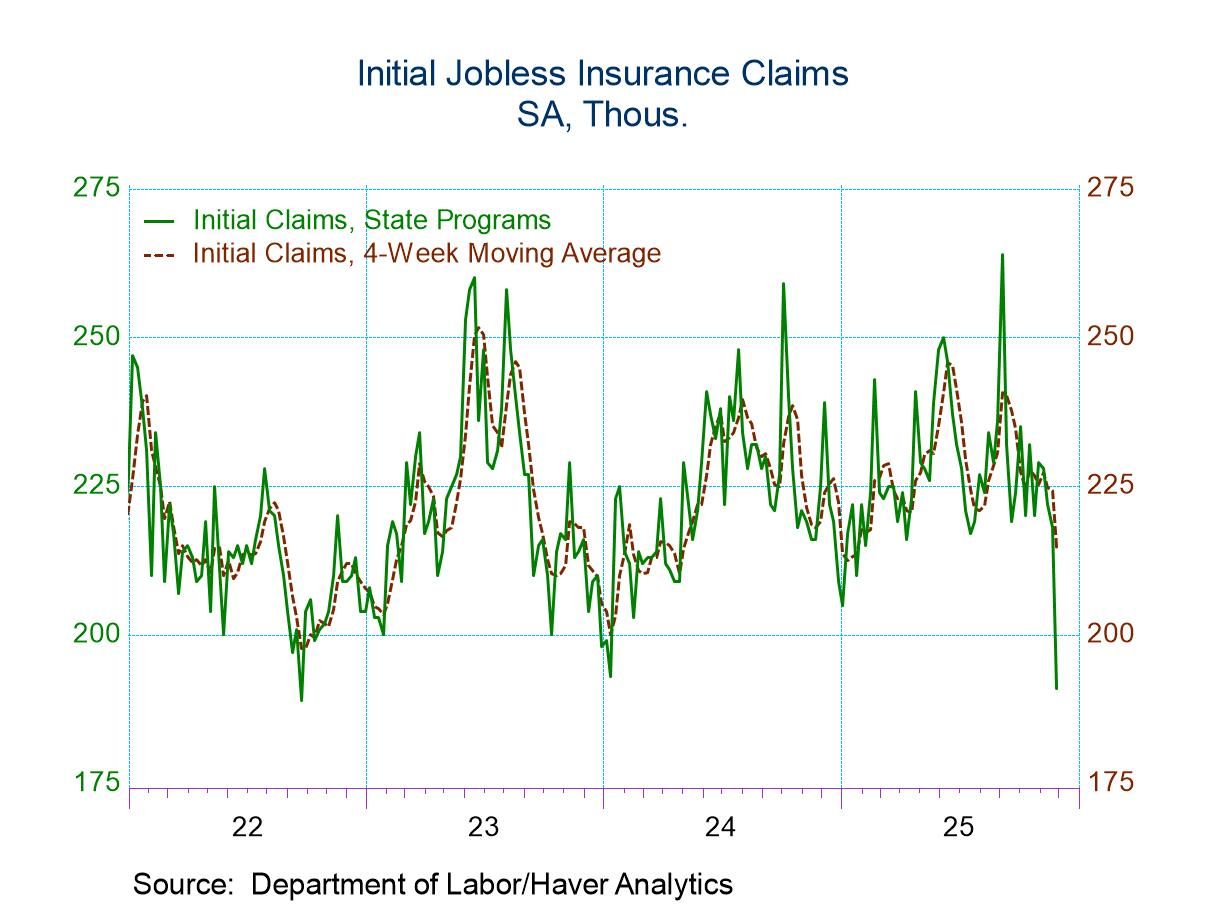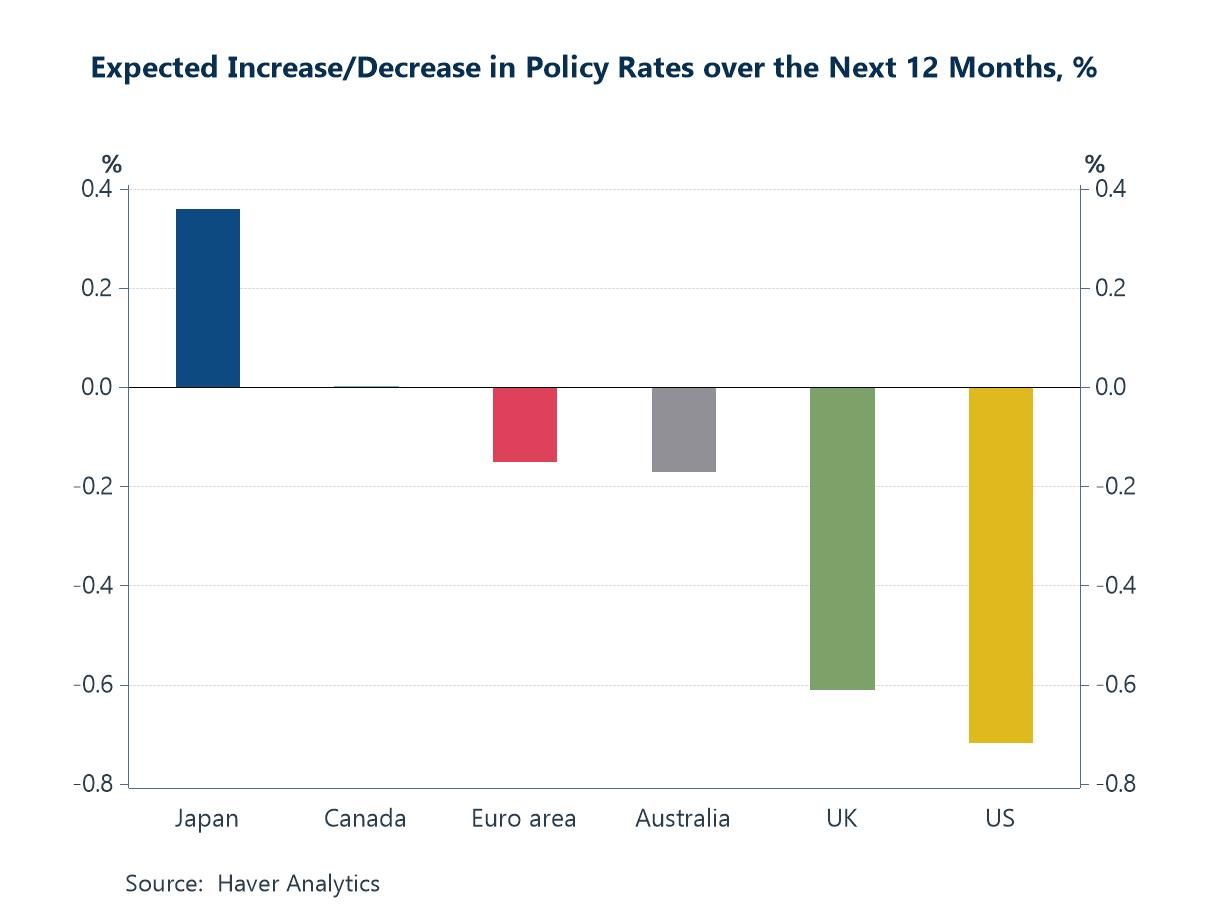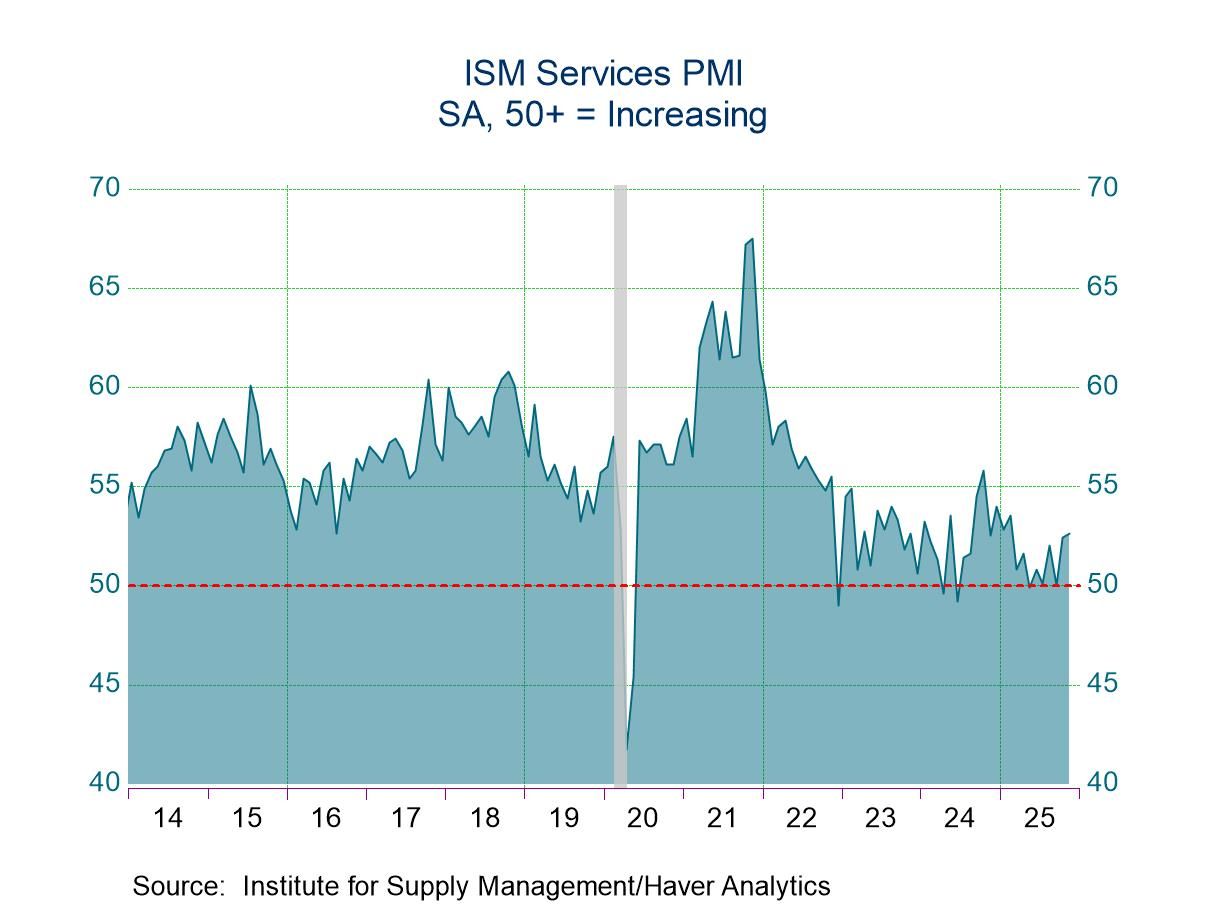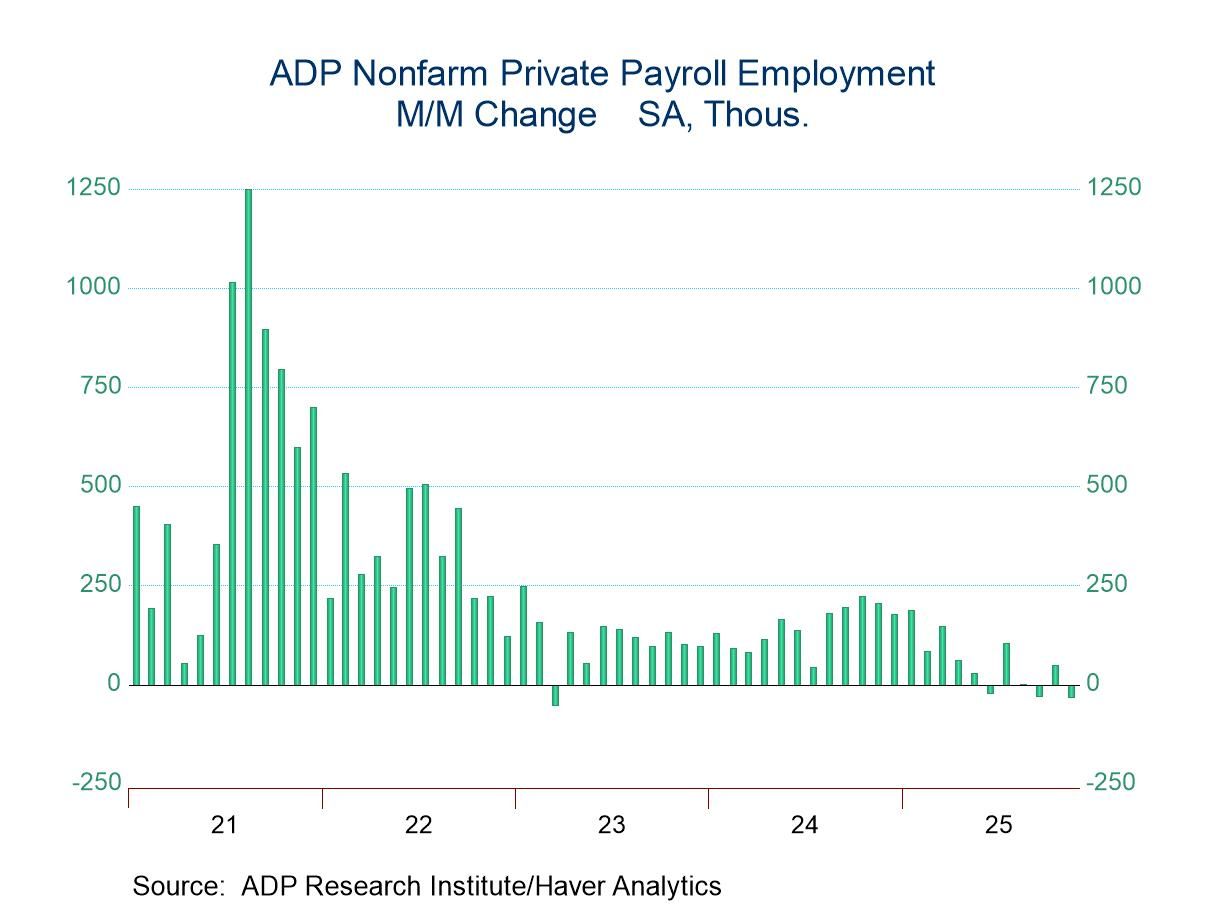JOLTS: Job Openings Jumped but Hiring Fell in May
by:Sandy Batten
|in:Economy in Brief
Summary
- Job openings increased 374,000 in May, the largest monthly gain since last November.
- Hiring fell 112,000, the largest monthly decline since last October.
- Separations fell 71,000, led by a 202,000 decline in layoffs.


Job openings jumped 374,000 (-1.7% y/y) in May to 7.769 million, the highest level since last November, versus 7.395 million in April, according to the Job Openings and Labor Turnover Survey. The market consensus had expected a slight decline to 7.3 million in May. The job openings rate increased to 4.6% in May from 4.4% in April. This rate has fluctuated between 4.3% and 4.8% over the past year. The record high for this rate was 7.4% reached in March 2022. This rate is calculated as the ratio of job openings to total nonfarm employment plus openings. The number of openings in May was 532,000 higher than the number of people unemployed, an increase from 229,000 in April and 117,000 in March, pointing to a little less softening of labor-market conditions.
Private sector openings increased 374,000 (+1.2% y/y) to 6.936 million in May, the second consecutive monthly rise. This was the first y/y increase since July 2022. The private openings rate rose to 4.9% in May from 4.6% in April. The May increase in private openings was led by a 279,000 increase in leisure and hospitality openings, the first monthly gain in five months. Manufacturing saw a 22,000 increase in openings, only the second monthly increase in the past eight months. Openings in private educational and health services rose 47,000 in May on top of a 204,000 jump in April. Federal government openings slumped 39,000, the largest monthly decline since June 2024 while state and local government openings increased by 40,000.
Total hiring fell 112,000 (-1.3% y/y) to 5.503 million in My from 5.615 million in April. This was the first monthly decline in three months and the largest since last October. The hiring rate edged down to 3.4% in May from 3.5% in April. This rate has fluctuated between 3.3% and 3.5% for nearly a year. Private sector hiring declined 95,000 in May after having jumped 204,000 in April. The May decline was the first one in six months and was widely spread across sectors. New hiring in private educational and health services fell 83,000 in May; professional and business services hiring fell 47,000. In contrast, leisure and hospitality hiring rose 121,000, the third consecutive monthly increase. Government hiring fell 18,000 with declines in both federal and state & local government hiring.
Total separations fell 71,000 (-1.4% y/y) to 5.242 million in May from 5.313 million in April. The separation rate was unchanged at 3.3%, where it has been for the past four months. Quits rose 78,000 (-1.8% y/y) to 3.293 million in May from 3.215 million in April after falling 129,000 in April. Layoffs and discharges fell 188,000 (-3.8% y/y) to 1.601 million in May from 1.789 million in April, just short of offsetting a 199,000 increase in April. Other separations rose 40,000 (+18.7% y/y) to 349,000 in May from 309,000 in April. Total private separations fell 89,000 to 4.892 million in May with a 69,000 increase in private quits, a 202,000 decline in layoffs and a 45,000 increase in other separations.
The Job Openings and Labor Turnover Survey (JOLTS) data are available in Haver’s USECON database.
Sandy Batten
AuthorMore in Author Profile »Sandy Batten has more than 30 years of experience analyzing industrial economies and financial markets and a wide range of experience across the financial services sector, government, and academia. Before joining Haver Analytics, Sandy was a Vice President and Senior Economist at Citibank; Senior Credit Market Analyst at CDC Investment Management, Managing Director at Bear Stearns, and Executive Director at JPMorgan. In 2008, Sandy was named the most accurate US forecaster by the National Association for Business Economics. He is a member of the New York Forecasters Club, NABE, and the American Economic Association. Prior to his time in the financial services sector, Sandy was a Research Officer at the Federal Reserve Bank of St. Louis, Senior Staff Economist on the President’s Council of Economic Advisors, Deputy Assistant Secretary for Economic Policy at the US Treasury, and Economist at the International Monetary Fund. Sandy has taught economics at St. Louis University, Denison University, and Muskingun College. He has published numerous peer-reviewed articles in a wide range of academic publications. He has a B.A. in economics from the University of Richmond and a M.A. and Ph.D. in economics from The Ohio State University.





 Global
Global
